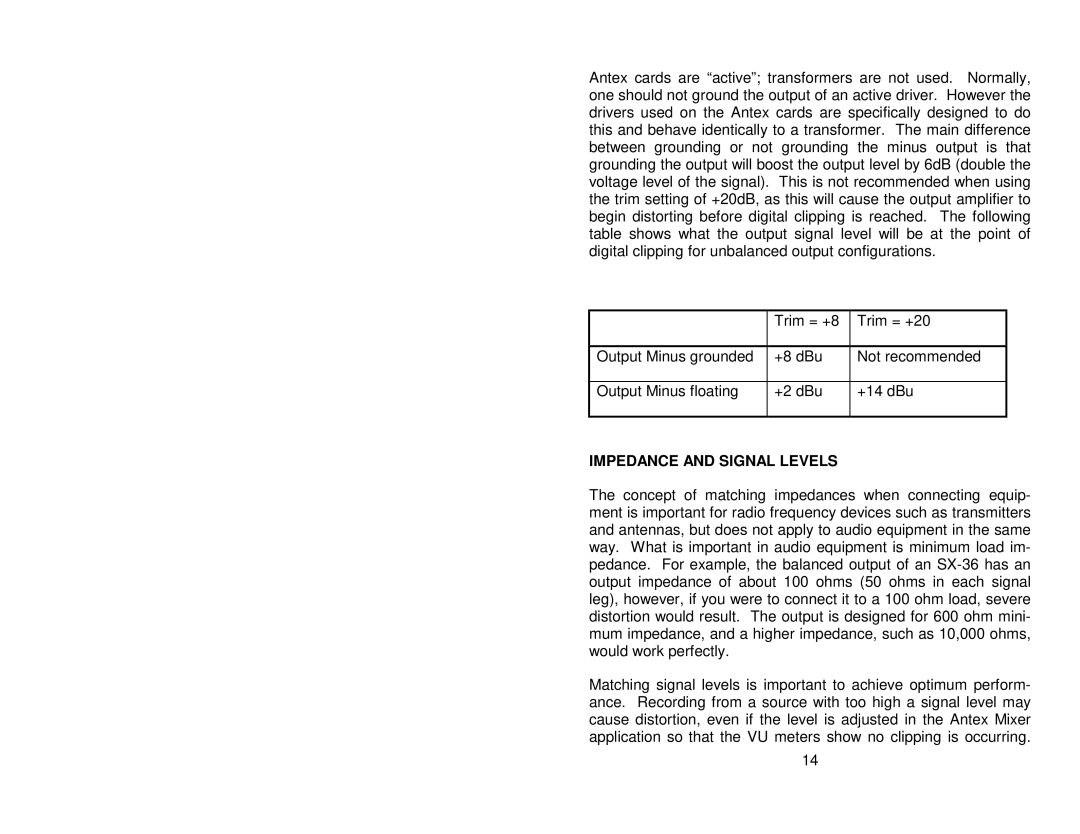Antex cards are “active”; transformers are not used. Normally, one should not ground the output of an active driver. However the drivers used on the Antex cards are specifically designed to do this and behave identically to a transformer. The main difference between grounding or not grounding the minus output is that grounding the output will boost the output level by 6dB (double the voltage level of the signal). This is not recommended when using the trim setting of +20dB, as this will cause the output amplifier to begin distorting before digital clipping is reached. The following table shows what the output signal level will be at the point of digital clipping for unbalanced output configurations.
| Trim = +8 | Trim = +20 |
|
|
|
Output Minus grounded | +8 dBu | Not recommended |
|
|
|
Output Minus floating | +2 dBu | +14 dBu |
|
|
|
IMPEDANCE AND SIGNAL LEVELS
The concept of matching impedances when connecting equip- ment is important for radio frequency devices such as transmitters and antennas, but does not apply to audio equipment in the same way. What is important in audio equipment is minimum load im- pedance. For example, the balanced output of an
Matching signal levels is important to achieve optimum perform- ance. Recording from a source with too high a signal level may cause distortion, even if the level is adjusted in the Antex Mixer application so that the VU meters show no clipping is occurring.
14
